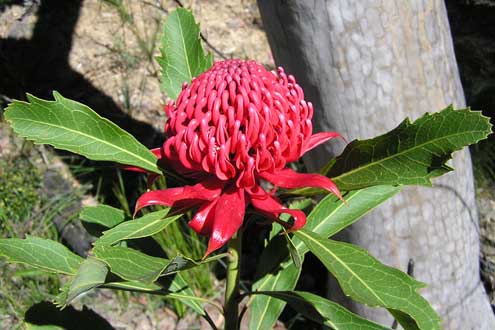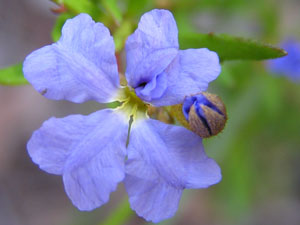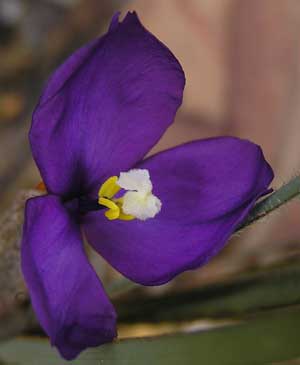There's 2,362 species* of native plants in the eight reserves that make up the one million hectare Greater Blue Mountains World Heritage Area (GBMWHA).
[* - species in this case includes subspecies and varieties.]
108 of these species are threatened species with a further 292 protected. They are detailed here.
In addition, there's over 400 exotic or introduced species (weeds) and they're detailed here.
Here's the list of the GBMWHA native flora species.
The list is compiled from BioNet and PlantNET.
More details of the analysis can be found at the foot of this webpage.
The Waratah Software website contains over 250 images of Blue Mountains wildflowers.
The Greater Blue Mountains World Heritage Area (GBMWHA) was inscribed on the World Heritage list due to its biodiversity - especially its number of Eucalypt species.
The Nomination for World Heritage quoted "over 1,500 flora species". It now stands at 2,362 - and is increasing.
You will find more information about the GBMWHA here.
The landscape, geology, microclimates and fire histories of the Greater Blue Mountains are very diverse, and give rise to a rich ecological diversity. This is well expressed by the variety of vegetation in the World Heritage Area, which contains:
- 7 of the 12 vegetation formations recognised for New South Wales: Dry Sclerophyll Forests, Wet Sclerophyll Forests, Grassy Woodlands, Rainforests, Heathlands, Freshwater Wetlands, Forested Wetlands;
- 28 broad vegetation classes (almost one-third of the 99 classes recognised for NSW);
- some 500 distinct vegetation communities ('locally consistent assemblages of plant species that live together')
You will find more information about the GBMWHA's vegetation here.
The information used to compile the list of GBMWHA flora was extracted from -
The list produced in 2016, only went to the species level - whereas this list goes to the subspecies/variety/form level.The list is by no means definitive, and will change as -
- new species are identified
- the effect of climate change is felt
- existing species are reclassified as subspecies, and vice-versa*
- exotic species are introduced or removed.
* - the Dwarf Purple Flag shown here was Patersonia longifolia.
Note: Where subspecies are included, the "parent" species is omitted; whereas when a variety is included, its parent is retained.
Some PlantNet records go back almost 200 years, and these species may no longer be present.
It should be also remembered that 65% of the million hectares of the GBMWHA is declared wilderness and is difficult to access.
In addition, BioNet makes the following qualification - "The data are only indicative and cannot be considered a comprehensive inventory, and may contain errors and omissions."
However, the list provide a solid baseline of the GBMWHA native flora - its diversity, breadth and splendour.



